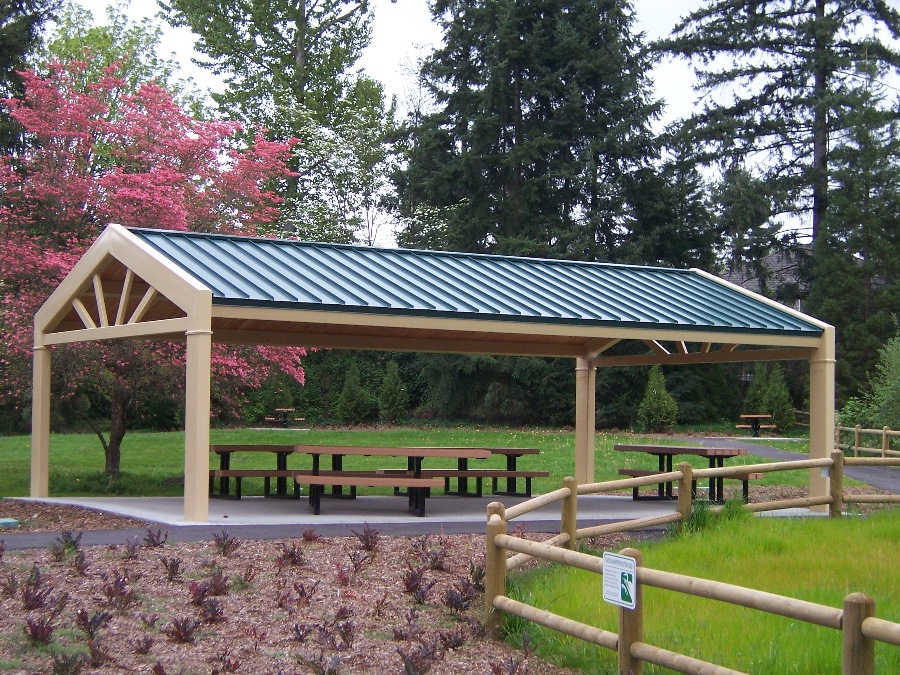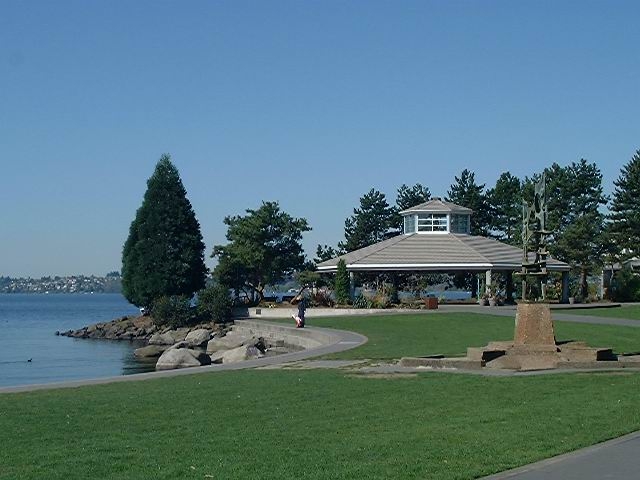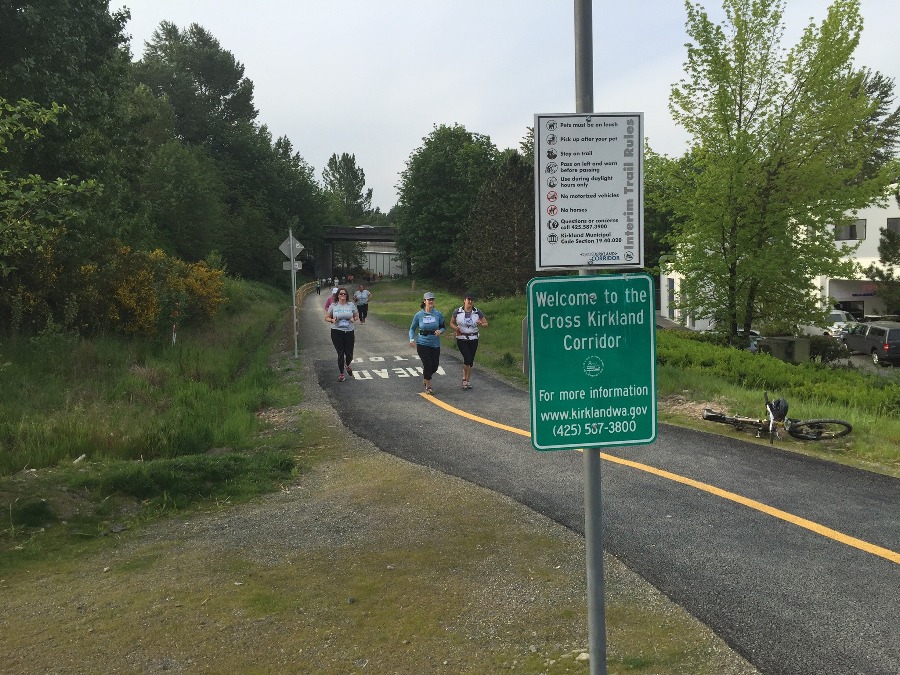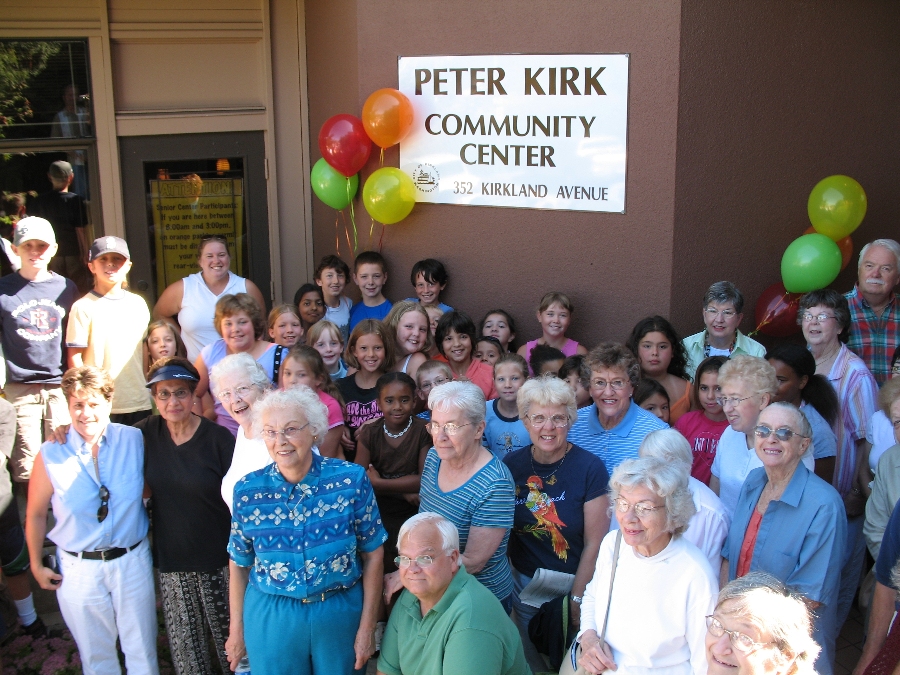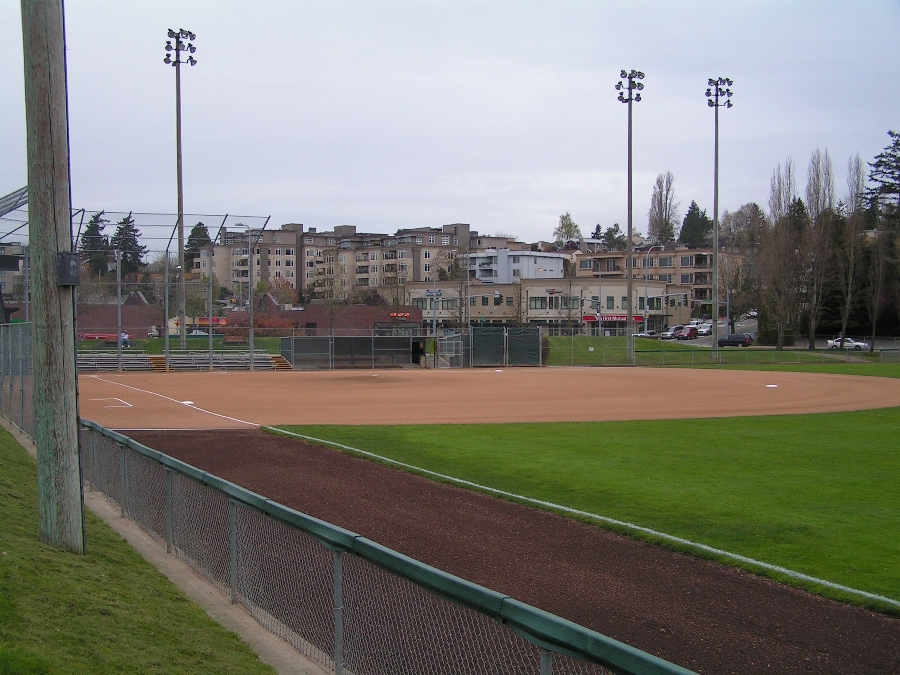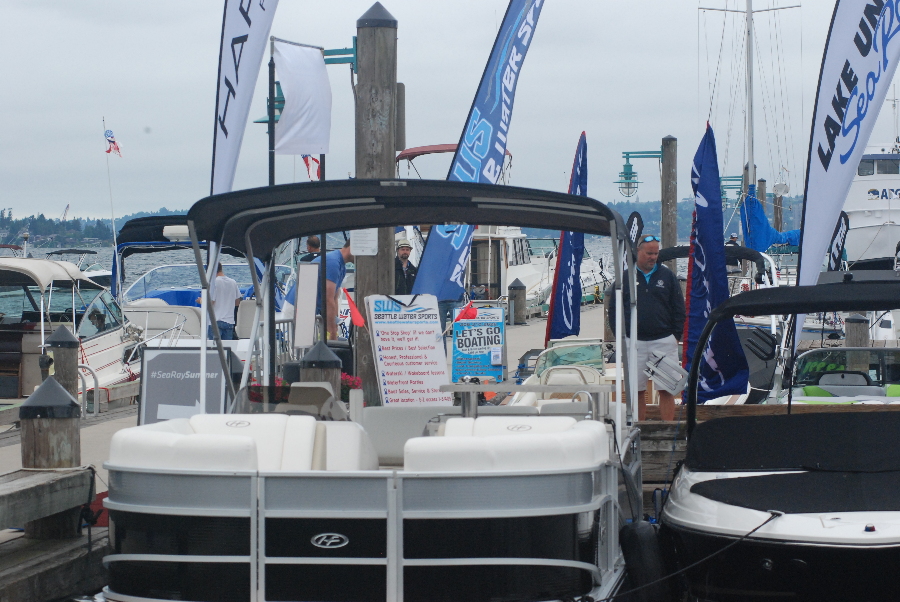C. Parks, Recreation, and Open Space Goals and Policies
|
Goal PR-1: Acquire, develop, and renovate a system of parks, recreation facilities, and open spaces that is attractive, safe, functional, and accessible to all segments of the population. |
|
Goal PR-2: Enhance the quality of life in the community by providing services and programs that offer positive opportunities for building healthy, productive lives. |
|
Goal PR-3: Protect, preserve, and restore publicly owned natural resource areas. |
1. Community Engagement
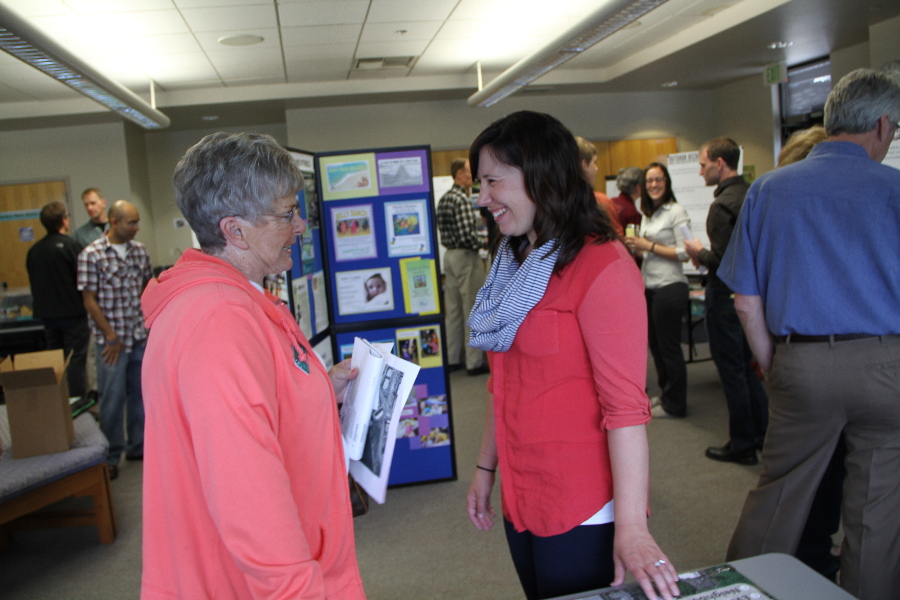
Community event
Policy 1.1: Community Involvement. Encourage and support active and ongoing participation by diverse community members in the planning and decision-making for parks and recreation.
The City should involve residents and stakeholders in park and recreation facility planning, design and recreation program development to solicit community input, facilitate project understanding and build public support. Park planning should be integrated with the neighborhood planning process and should pursue opportunities to partner with residents and neighborhood groups to improve, maintain and monitor local parks, natural areas and trails. The City should identify underrepresented segments of the community and work to improve their capacity to participate in park planning and decision-making.
2. Neighborhood and Community Parks
Rose Hill Meadows
Policy 2.1: Park Acquisition. Acquire additional parklands necessary to adequately serve the City’s current and future population based on level of service goals.
The City should provide 1.5 acres per 1,000 persons of developed neighborhood parks and 2.25 per 1,000 residents of developed community parks.
The City should proactively seek parkland identified within the PROS Plan, in both developed and undeveloped areas, to secure suitable locations for new parks to serve future residents. Acquisition opportunities should be evaluated based on criteria such as improvement to existing level of service, connectivity, preservation and scenic or recreational opportunities for residents. To provide equitable park distribution, the City should prioritize park acquisition in underserved areas where households are more than one-quarter mile from a developed park and in areas of the City facing population growth and residential and commercial development.
Policy 2.2: Park Improvement. Improve park sites to meet the active and passive recreational needs of Kirkland residents.
Park sites should be developed based on master plans, management plans, or other adopted strategies to ensure parks reflect local needs, community input, recreational and conservation goals, and available financial resources. The City should prioritize park development in underserved areas where households are more than one-half mile from a developed park and in areas of the City facing population growth and residential and commercial development.
3. Waterfront Parks
Marina Park
Policy 3.1: Waterfront Parks. Maintain and enhance Kirkland’s waterfront parks to connect residents with the water, provide unique recreational experiences, and support tourism.
The City should pursue opportunities to acquire additional privately held waterfront parcels as available; particularly sites that might create needed connections for a more continuous lakefront corridor or will provide lake access in underserved areas. The City considers opportunities to retain and repurpose street ends to create water access points and explore opportunities for cooperative or joint use ventures.
Non-motorized small craft water-oriented activities/programs along the shoreline should be encouraged where appropriate and consistent with public interest and needs.
4. Trail Network
Cross Kirkland Corridor Trail
Policy 4.1: Trail System. Develop a network of shared-use pedestrian and bicycle trails to enable connections within parks and between parks, nearby neighborhoods, public amenities, and major pedestrian and bicycle routes identified in the Active Transportation Plan.
Trail system planning and development should be coordinated with the City’s Active Transportation Plan to provide a comprehensive pedestrian and bicyclist network. The City should facilitate and provide for a high degree of trail connectivity from core signature trails, such as the Cross Kirkland Corridor, to neighborhood, park and waterfront destinations.
The City should partner with local utilities, public agencies and private landowners to secure trail easements and access to open space for trail connections. The City should integrate the siting of proposed trail segments into the development review process; require development projects along designated trail routes to be designed to incorporate trail segments as part of the project.
Policy 4.2: Signature Trails and Connections. Develop, enhance and maintain signature greenways and trails that stretch across the community and that connect residents to the City’s many parks, natural areas, recreation facilities and other amenities.
Kirkland Waterfront: The City should strive to create a continuous pedestrian and bicyclist greenway along the lakeshore through parks, neighborhood greenway improvements, and trail easements.
Cross Kirkland Corridor: Develop or improve parks adjacent to the Cross Kirkland Corridor to provide additional amenities and create pleasant destinations or stopping points along the trail.
Bay to Valley Connection: Build on the City’s existing parks and natural areas along Forbes Creek and NE 100th Street to create an east-west trail that connects users from Juanita Bay through central Kirkland and into the Sammamish Valley.
Finn Hill Connection: Consider protection and development of a greenway and trail corridor to connect existing trail systems and provide additional recreational amenities.
Eastside Powerline Corridor: Explore opportunities to develop a north-south trail under the Seattle City Light (SCL) power lines to link Kirkland’s eastern neighborhoods to Bridle Trails State Park and other existing parks, the Cross Kirkland Corridor, major retail and employment destinations, and to other neighborhoods.
Lakes-to-Locks Water Trail: Support the continued implementation of the Lakes-to-Locks Water Trail to provide water trails along Lake Washington and adjoining water bodies.
5. Recreation Facilities and Programming
Peter Kirk Community Center
Policy 5.1: Recreation Services. Provide a variety of recreational services and programs that promote the health and well-being of residents of all ages and abilities.
The City should design programming and services to meet the needs of diverse users, including at-risk communities or those with special needs. The City should ensure accessibility of programs by holding classes and activities at locations throughout the community and at affordable rates. The City should promote and coordinate recreational opportunities provided by partners to help connect residents with options to learn and recreate.
Policy 5.2: Community Centers. Maintain and enhance Kirkland’s community centers to provide recreational opportunities, community services and opportunities for residents to connect, learn and play.
Kirkland’s existing community centers should be managed to provide a diverse array of recreational programs, services and experiences for all City residents.
The City should provide additional community recreation facility space to meet indoor recreation needs for athletics, recreation classes, and meeting space, and pursue development of an additional multiuse indoor facility that provides space to provide a comprehensive recreation program to Kirkland residents.
Policy 5.3: Aquatic Facilities and Programs. Provide opportunities for aquatic recreation through the City’s pools and lakefront facilities.
The City should maintain and enhance aquatics facilities and programs at existing outdoor and lake sites. The City should pursue opportunities to develop indoor aquatic components as part of a multiuse facility, potentially in partnership with other organizations or agencies.
Policy 5.4: Recreation Programs for All Ages. Provide programming and services that support recreation and learning for target populations, including youth, teens, adults and older adults.
The City should continue to expand and diversify its popular youth programs to meet the growing need for engaging, affordable, safe options for children. The City should partner with the Lake Washington School District, community partners, recreation providers, and sports organizations to offer both drop-in and structured programs in sports; art, music and dance; and educational and environmental activities for youth. The City should build on existing partnerships to expand teen programming to include additional individual athletics, fitness, and alternative sports programs.
The City should also explore options to expand the quantity and breadth of adult programs offered, in partnership with other recreation providers and organizations. Finally, the City should continue to provide and expand opportunities for seniors to engage in social, recreational, educational, nutritional, and health programs designed to encourage independence, in partnership with community agencies.
Policy 5.5: Universal Access and Inclusion. Strive to reduce barriers to participation and provide universal access to facilities and programs.
Future improvements to parks, recreation facilities and trails should be designed to be in compliance with the guidelines of the Americans with Disabilities Act and with universal accessibility in mind. The City should continue to develop and offer recreational programs for youth and adults with special needs and support inclusion opportunities in all programs.
Policy 5.6: Specialized Recreation Facilities. Establish and operate specialized recreational facilities (e.g., action sports facilities, off-leash areas, skateparks, community gardens) to respond to identified public needs, as appropriate.
The City should consider local needs, recreational trends, and availability of similar facilities within the region when planning for specialized recreational facilities. The City should consider providing facilities for alternative or emerging sports, such as skateboarding, BMX, mountain biking, ultimate Frisbee, disc golf, climbing and parkour, to offer residents a more diverse range of recreational experiences.
The City should consider siting additional off-leash areas in suitable parks, where off-leash use is safe and would have limited environmental impacts.
The City should provide community gardens at suitable sites to provide opportunities for gardening, healthy eating and social connections and to encourage productive landscapes. The City should consider developing and managing community and experiential gardens in partnership with community organizations or educational programs.
6. Athletics
Peter Kirk Park sports field
Policy 6.1: Field Sports. Provide a Citywide system of sports fields and programs to serve field sport needs of the community, in partnership with the Lake Washington School District, local sports organizations, and other regional providers.
The City should enhance maintenance, investments and safety of sports fields to better serve recreation users and extend playing seasons. The City should assess overall sports fields needs on a regular basis, based on existing inventories and local participation trends. The City should explore options to use existing sites more efficiently and/or acquire additional field space to meet capacity needs. Consideration should be given to resurfacing existing or new fields to artificial turf to allow more intensive use of field space, extend field seasons, and limit play cancellations due to rain and muddy conditions.
The City should continue its active partnerships with the Lake Washington School District and other recreation providers and actively explore opportunities for greater joint use of facilities.
Policy 6.2: Indoor and Outdoor Sports Courts. Provide and enable access to a Citywide system of indoor and outdoor sports courts, gymnasiums and programs for Kirkland residents.
The City should maintain and enhance the City’s partnership with the Lake Washington School District for use of their gymnasiums and athletic fields for organized recreation and sports activities. The City should consider installing basketball, volleyball, and/or tennis courts in future community parks or community centers and explore options to develop half-court basketball courts in neighborhood parks, as appropriate, particularly in underserved areas or where there is expressed neighborhood interest.
7. Conservation and Stewardship
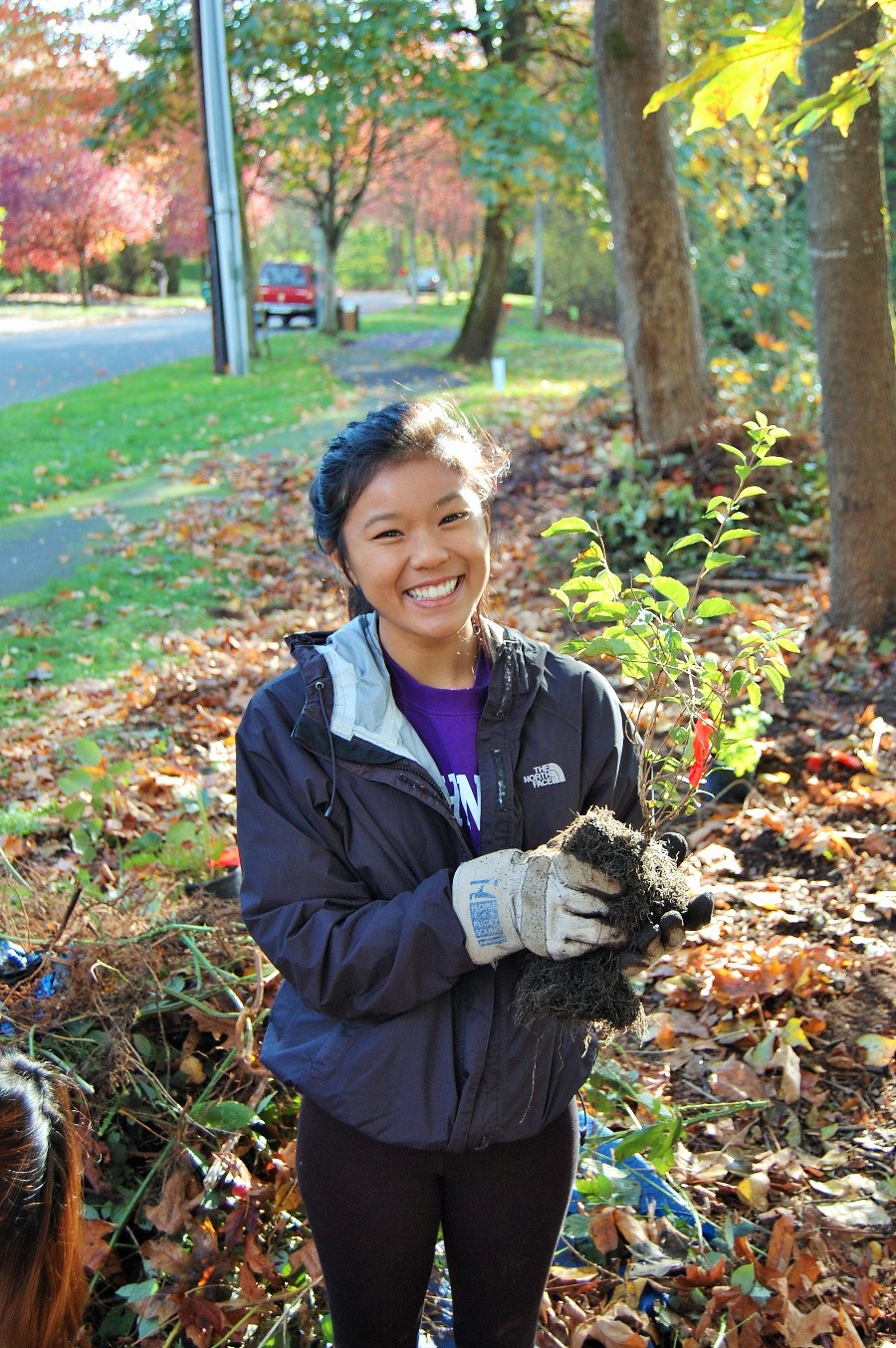
Community Stewardship
Policy 7.1: Natural Area Preservation. Preserve significant natural areas to meet outdoor recreation needs, provide opportunities for residents to connect with nature, and meet habitat protection needs.
The City should preserve high resource value, significant, or connected natural resource areas through acquisition or other protection (e.g., conservation easements) as they become available. The City should prioritize particularly high value resources, or those that create important wildlife and recreation connections within the existing system for preservation. This should include greenways and other corridors that provide wildlife habitat connectivity.
Policy 7.2: Natural Area Restoration and Management. Restore and manage City-owned or managed natural areas to protect and enhance their ecological health, sensitive habitats and native species.
The City should actively work to improve the conditions of City-owned natural areas through invasive species removal; planting of native species; restoration of urban forests, creeks, wetlands and other habitat; and improvement of hydrological conditions. Management of natural areas should integrate with the City’s urban forestry management planning.
The City should pursue opportunities to provide appropriate public access (e.g., trails, viewpoints, wildlife viewing areas, and boat landings) within natural areas to support passive recreation and environmental education.
Policy 7.3: Shoreline Restoration. Restore Kirkland’s public shorelines on Lake Washington in accordance with the Shoreline Restoration Plan to improve habitat, hydrology and recreational opportunities.
The City should pursue opportunities to remove bulkheads and other impervious surfaces in parks along the Lake Washington shoreline that impede natural habitat functions and increase stormwater flows into the lake. When developing or improving waterfront parks, the City should consider opportunities to restore degraded shorelines, increase riparian vegetation and other habitat features, and provide for additional pervious surfaces and green infrastructure.
Policy 7.4: Ecosystem Services. Protect and improve the City’s natural systems or features for their value in providing ecosystem and infrastructure services.
The City should manage forested areas to remove invasive species and encourage the establishment and succession of conifers and other native plants. Parks should be designed and restored to naturally capture and filter stormwater to improve watershed health.
The Parks and Community Services Department should partner with the City’s Public Works Department to identify opportunities to coordinate park, greenway, green infrastructure, stormwater and active transportation planning and projects.
Policy 7.5: Environmental Education. Promote environmental stewardship and education through informational signage, materials, programs and partnerships.
The City should enhance partnerships to create opportunities for educational programs and recreational opportunities in the City’s natural area parks and other local resources. The City should integrate interpretive signage that reflects Kirkland’s history, culture, natural assets, and wildlife populations into parks and natural areas to support learning.
Policy 7.6: Conservation Partnerships. Work cooperatively with resource management agencies and citizens to care for streams, enhance and protect urban forests and wetlands, improve wildlife habitat, and provide limited public access.
The City should strengthen the Green Kirkland Partnership to extend its reach and ensure continued care of the City’s natural areas. The City should work to enhance partnerships with agencies such as Eastside Audubon, King Conservation District, and local educational institutions to pursue additional restoration activities, wildlife monitoring, and environmental education.
8. Economic Development
Marina at Marina Park
Policy 8.1: Support Economic Development. Utilize strategic capital investments in parks, trails, open spaces, recreation and art to encourage and support economic development and revitalization.
Parks, trails, open spaces and recreational amenities contribute positively to the City’s economy by improving the community’s capacity to attract and retain sought-after companies and people. Kirkland’s rich park amenities help promote a higher quality of life which in turn attracts desirable jobs, residents and tourism.
The City should take advantage of opportunities to make strategic capital investments in its parks and recreation system to encourage and support economic development and revitalization.
Figure PR-1: Kirkland Parks



